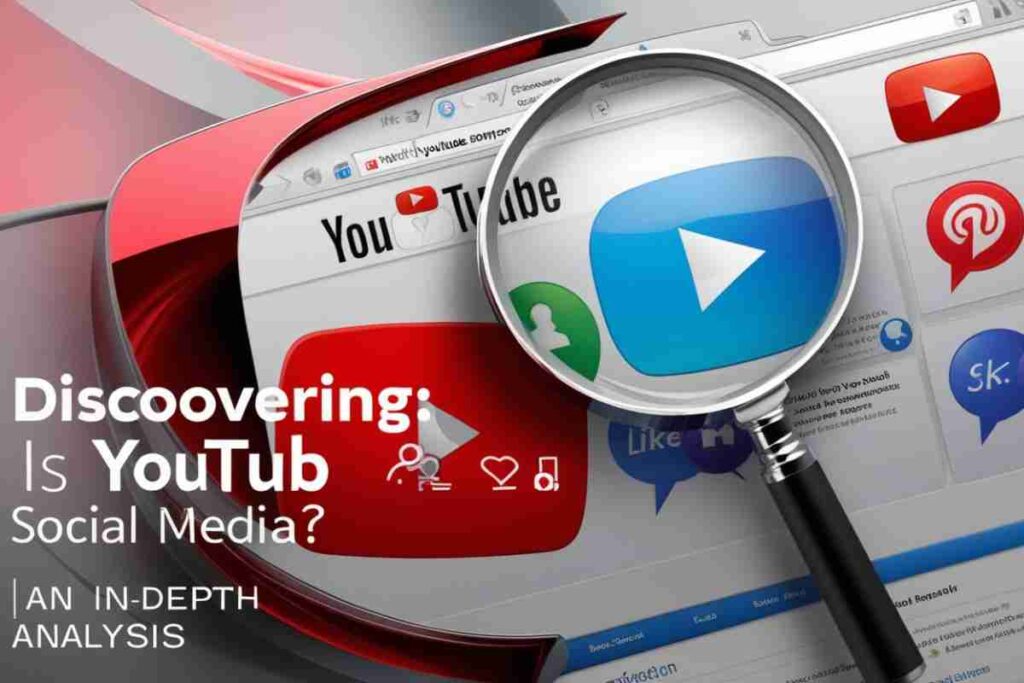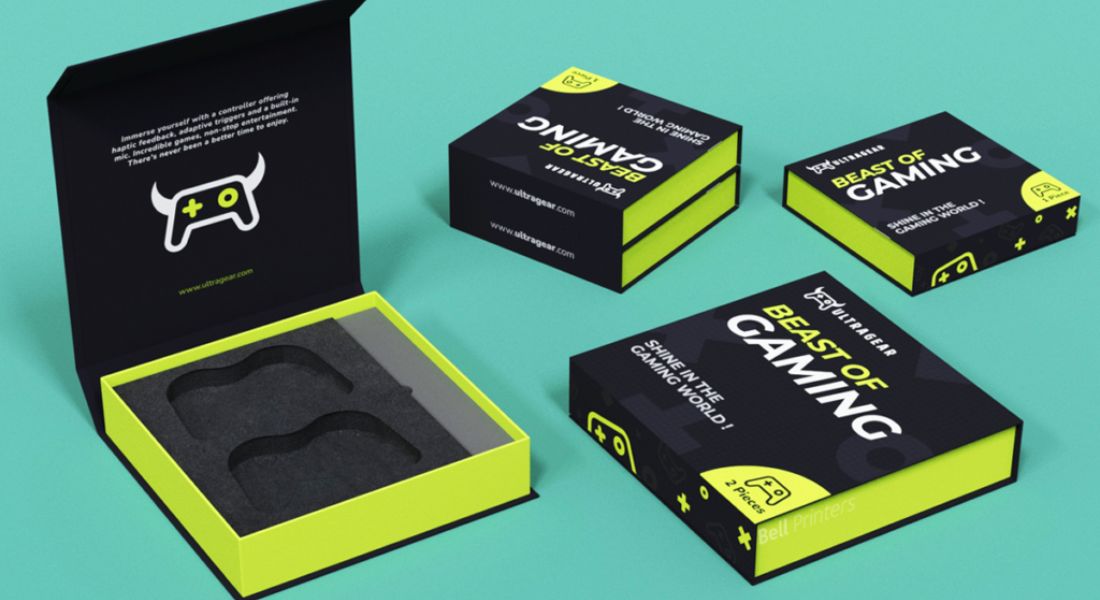In today’s digital age, YouTube is a powerhouse of content creation and consumption. However one question often arises Is YouTube a Social Media? While it’s primarily known as a video-sharing platform there are features that blur the lines between it and traditional social media sites.
This article explores YouTube’s characteristics and compares it with other platforms to provide a comprehensive answer to this intriguing question.
Understanding Is YouTube a Social Media?

Definition of Social Media
To determine whether YouTube qualifies as social media, we need to first define what makes a platform social media. Social media platforms typically allow users to create share content and interact with others.
These platforms emphasize user-generated content, social interaction, and networking. Examples of social media sites include Facebook Instagram and Twitter where users can engage through likes shares comments and follow relationships.
Types of Social Media Platforms
Social media platforms can be categorized into various types, including social networking sites like Facebook and LinkedIn, photo-sharing platforms like Instagram and Pinterest, and video-sharing sites like YouTube and TikTok.
Each serves unique purposes, facilitating various forms of content sharing and interaction. By analyzing these characteristics in the context of YouTube, we aim to answer the question: Is YouTube a social media?
How Does YouTube Compare to Other Platforms?
Is Netflix Social Media?
Netflix is primarily a streaming service for movies and TV shows. Unlike YouTube, it lacks user-generated content, social interactions, and networking features making it an entertainment platform rather than a social media site.
This distinction reinforces the idea that YouTube is a social media platform due to its emphasis on user interaction.
Is Google a Social Media?
Google itself is not a social media platform, though it owns YouTube. However, Google has attempted social platforms in the past, such as Google+ (which was discontinued). So, while YouTube is a social media platform, Google itself is not.
Is WhatsApp Social Media?
WhatsApp is a messaging app rather than a traditional social media platform. However, it does have some social networking elements such as status updates and group chats making it a hybrid communication tool. Despite this, it lacks the large-scale content-sharing features that define YouTube as a social media platform.
Is Spotify Social Media?
Spotify is primarily a music streaming service but incorporates social features, such as playlists and following artists.
However it lacks direct user-to-user interaction like comments or posts, so it is not considered a full social media platform. Unlike Spotify, YouTube is a social media platform because it enables conversations and community building.
Is YouTube a Social Media? Reddit Discussion
Discussions on Reddit about whether YouTube is social media reveal mixed opinions. Some users argue that YouTube is purely a content consumption site while others highlight its interactive community features as proof that YouTube is a social media platform.
The platform’s engagement tools comments likes shares and live chats support the argument that YouTube is indeed a social media site.
Characteristics of YouTube
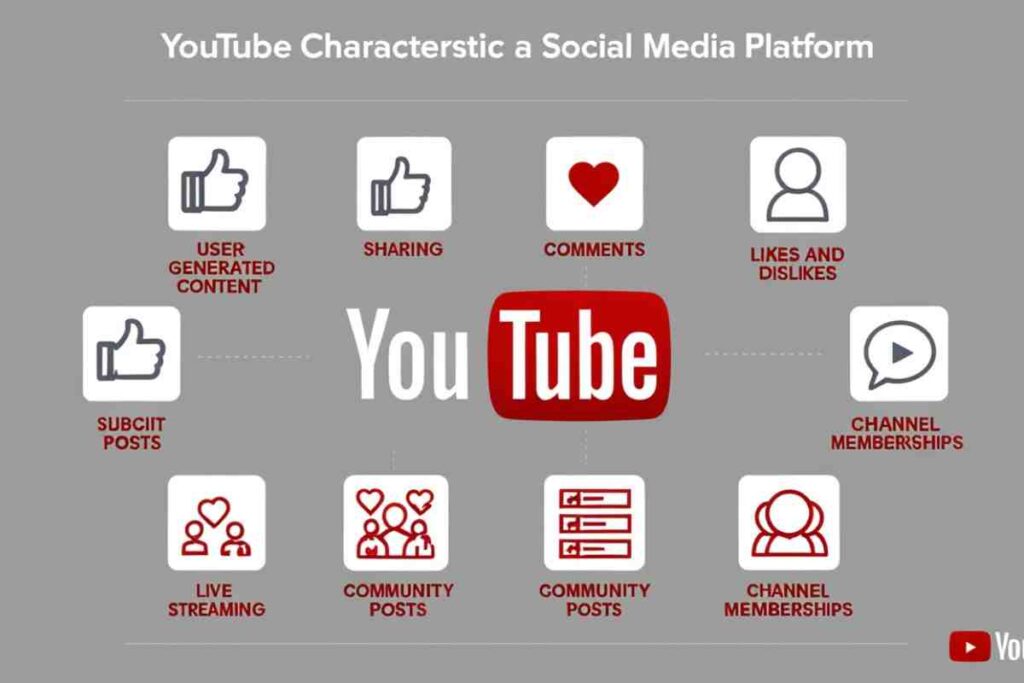
Is YouTube a Social Media?
So, is YouTube a social media platform? The answer is not a simple yes or no. YouTube started as a video-sharing site but with evolving features it now incorporates many elements commonly associated with social media.
Let’s break down the key factors that answer the question Is YouTube a Social Media?
User-Generated Content
At the heart of every social media platform is user-generated content, and YouTube is no exception. The platform allows creators to upload videos share personal experiences educational content entertainment and more.
This participatory aspect of YouTube is a defining characteristic of social media as it relies on users to generate content rather than solely relying on the platform owner.
Interaction and Engagement
Another critical feature of social media is the ability for users to interact with each other, and YouTube provides several opportunities for engagement. Users can comment on videos like or dislike content share videos and subscribe to channels.
These tools foster interaction between creators and their audiences, similar to the engagement seen on platforms like Facebook or Instagram.
Community Building
Building communities around shared interests is a hallmark of social media, and YouTube has excelled in this regard.
Through subscriptions and comments, creators can form strong, dedicated communities. Additionally, YouTube’s community tab allows creators to post updates polls and images to further engage their audience strengthening the connection between creators and viewers.
Influencer Culture
The rise of influencers is another reason why YouTube is a social media platform. Influencers on YouTube build large followings, often collaborating with brands for sponsored content.
This influencer culture plays a significant role in modern digital marketing, with YouTubers having a substantial impact on trends, opinions, and purchasing behavior similar to other social media influencers on platforms like Instagram or TikTok.
Viral Potential
Content going viral is a common phenomenon on social media platforms, and YouTube is no different. Videos can quickly gain millions of views when shared across multiple platforms, reflecting YouTube’s potential for virality.
The ability for videos to spread quickly is one of the key social media characteristics that align YouTube with other popular platforms.sts that YouTube is increasingly becoming a preferred choice for social interaction among younger audiences.
Differences Between YouTube and Other Social Media Platforms
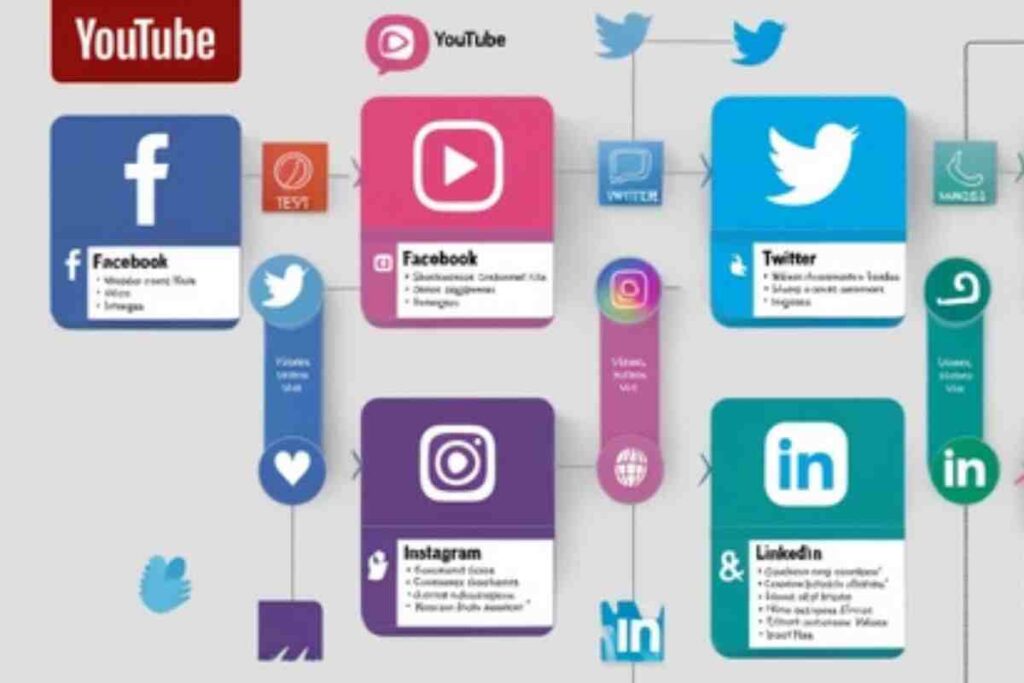
While YouTube shares many features with social media, there are notable differences that set it apart from platforms like Facebook, Instagram, and TikTok.
Content Length
One of the most significant differences is the content length. YouTube allows for both long-form videos and short form content through YouTube Shorts. In contrast other platforms like Instagram and TikTok are designed for short, snackable content.
YouTube’s ability to support in-depth videos, often lasting 10 minutes or more, makes it unique in the social media landscape.
Discoverability and Searchability
Unlike platforms like Instagram or Facebook where content is primarily discovered through feeds or hashtags YouTube’s content is highly searchable via keywords.
This searchability allows users to find specific content easily making it easier to access educational videos tutorials and niche content.
This feature is an advantage for users and creators alike, making YouTube a more effective content discovery platform than many other social networks.
Monetization Opportunities
Monetization on YouTube is a key differentiator. Through YouTube ads creators can earn revenue directly from their content.
This level of monetization is more established than on many other social media platforms where monetization options are either limited or less structured.
While platforms like Instagram or TikTok offer opportunities for brand collaborations YouTube provides a more robust and sustainable way for creators to earn money.
Content Longevity
Unlike posts on Instagram or Facebook, which can quickly disappear from feeds, YouTube videos have long-lasting visibility.
Once a video is uploaded it remains on the platform indefinitely and continues to attract views making YouTube a content hub with excellent content longevity. This stands in contrast to the short lifespan of posts on many other social media platforms.
YouTube’s Unique Social Media Elements
Recommendation Algorithm
YouTube’s recommendation algorithm is crucial in creating a personalized user experience, helping users discover new content and fostering more profound engagement.
SEO and Visibility
Search engine optimization (SEO) is vital on YouTube, helping videos reach a wider audience. Effective use of keywords in titles, descriptions, and tags ensures better visibility in search results.
Real-Time Interaction
YouTube Live and Premieres allow creators to interact with their audiences in real time, offering a live event experience that enhances the platform’s social nature.
Effective use of calls-to-action within videos encourages viewers to engage further, whether by liking, subscribing, or sharing the content. This practice fosters a sense of community and belonging among followers, amplifying YouTube’s social media characteristics.
The Business Aspect of YouTube
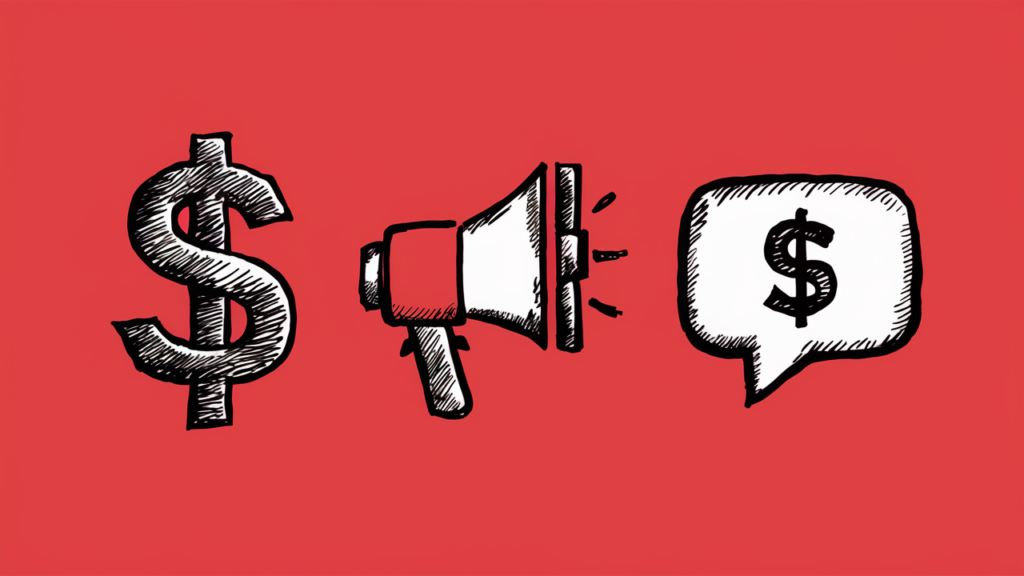
Monetization
YouTube offers various monetization options for creators, including ads, channel memberships, and Super Chat during live streams. This model is similar to other social media platforms that offer revenue opportunities for content creators.
Advertising
YouTube’s advertising model allows businesses to reach a large, diverse audience, making it an attractive platform for marketers. Advertisements on YouTube can drive significant consumer engagement and conversion rates.
Conclusion
So, is YouTube a social media platform? The answer is yes—while it primarily focuses on video content, it meets the key characteristics of social media: user-generated content, interactivity, and community building.
YouTube allows users to engage through comments, likes, shares, and subscriptions, making it more than just an entertainment hub.
However,Is YouTube a Social Media? also functions as an entertainment platform and a search engine, further blurring the lines between categories.
Also Read:
Using Social Media to Support Activities: A Comprehensive Guide
The Power of Social Media Forums
FAQS
Is YouTube considered social media?
Yes, YouTube qualifies as social media because it allows user-generated content, engagement through comments, and community building.
Is YouTube more of an entertainment platform or social media?
It’s both YouTube provides entertainment through videos while also enabling interaction through likes, comments, and shares.
How is YouTube different from other social media platforms?
Unlike Facebook or Instagram, YouTube focuses more on video content rather than direct messaging or frequent status updates.
Is YouTube Shorts considered social media?
Yes, YouTube Shorts competes with TikTok and Instagram Reels, reinforcing YouTube’s role as a social media platform.
Why do some people say YouTube isn’t social media?
Some argue that YouTube prioritizes video consumption over social networking and lacks private messaging features.
How does YouTube compare to TikTok?
Both are video-based social platforms, but TikTok emphasizes short-form content and viral trends more than traditional YouTube videos.
Is YouTube a search engine as well?
Yes, YouTube is the second-largest search engine after Google, commonly used for tutorials, reviews, and information.
Does YouTube have networking features like Facebook?
While it lacks direct messaging, it allows community interaction through comments, subscriptions, and shared content.
